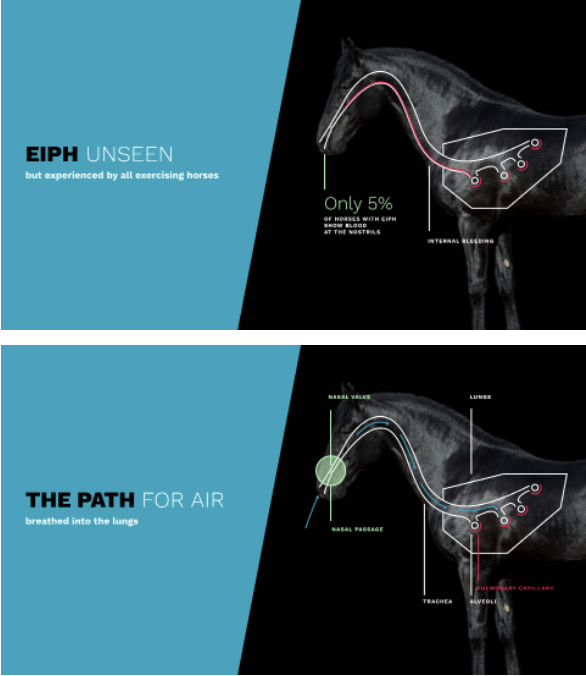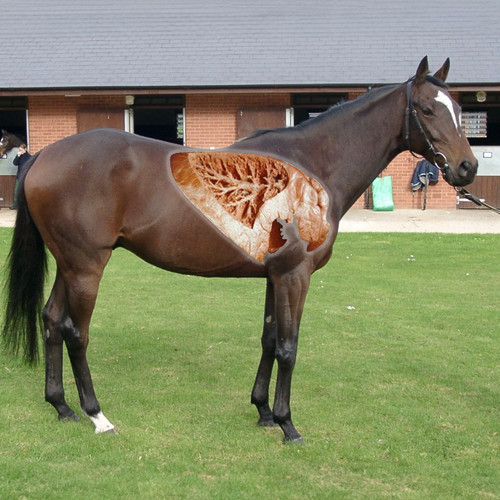Help! My Horse has been Diagnosed with EIPH.
Posted by FLAIR Strips on Apr 1st 2025
Receiving an Exercise-Induced Pulmonary Hemorrhage (EIPH) diagnosis for your horse can be daunting.
Perhaps you've noticed a dip in performance or even spotted blood in their nostrils after a workout. While EIPH may seem overwhelming, understanding and managing it can make all the difference.
Though complex, EIPH is a common, manageable condition that many performance horse owners face, and addressing it is essential since the lungs are the limiting factor in performance.
Here’s what you need to know to navigate this confidently.
What is EIPH?

Exercise-Induced Pulmonary Hemorrhage (EIPH) occurs to some degree in 95-100% of exercising horses, regardless of exercise intensity.
It is a multifactorial physiologic adaptation of equine athletes wherein extraordinarily high forces converge on the fragile pulmonary capillary membrane (PCM), causing rupture of blood vessels and bleeding into the lungs.
While this bleeding often goes unnoticed, repeated episodes can lead to cumulative and progressive lung scarring over time that impacts exercise tolerance, performance, and career longevity, and the overall health and well-being of athletic horses.
Recognizing EIPH Signs
Though subtle at first, some signs may indicate the presence of EIPH:
- Nosebleeds – While rare, they are easily noticeable when they occur.
- Swallowing and Coughing Post-Exercise – These symptoms indicate possible blood accumulation.
- Slower Recovery After Workouts – Lung strain may cause extended recovery times.
- Fatigue and Reduced Stamina – Sudden decrease in speed or endurance may signal exercise intolerance or poor performance.
Step-by-Step Guide for Owners
- Get a Veterinary Diagnosis: Tests like endoscopy, lung wash, and blood biomarkers can help confirm EIPH, evaluate its severity and associated inflammation.
- Explore Management Options: While no cure exists, modalities such as FLAIR Equine Nasal Strips, Lasix and anti-inflammatory therapies, especially when combined, can help reduce bleeding frequency and severity. Educate yourself and stay on top of which treatments have scientific evidence.
- Create a Management Plan: Rest, a dust-free environment, and a balanced pelleted diet ± steamed or soaked hay with Omega-3s for anti-inflammatory effects that help minimize EIPH effects.
- Adjust Training and Competitions: Schedule rest days, build stamina gradually, and space out events to protect lung health. Understand the relationship between the severity and extent of damage caused by competition versus training, modifying your training methods and treatment strategies to minimize lung damage.
- Work with Your Vet and Team: Regular monitoring and team communication ensure consistent support for your horse’s well-being.
Final Thoughts
While EIPH can’t be entirely prevented, consistent and proactive management can help your horse maintain performance and a longer athletic career. By understanding EIPH and taking these targeted steps, you’re empowering yourself to provide the best possible care for your equine partner.
One simple, evidence-based way to support your horse’s respiratory health? FLAIR Strips are self-adhesive nasal strips designed to reduce airway resistance during






